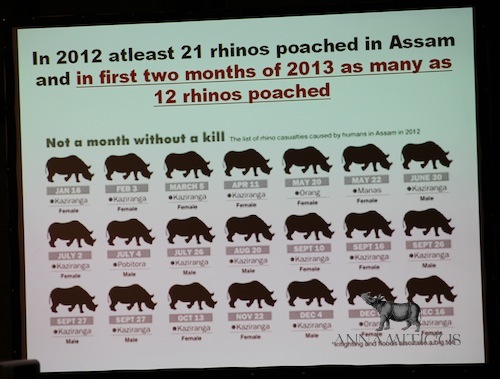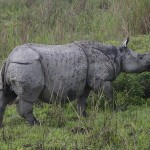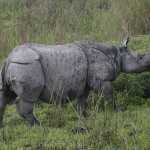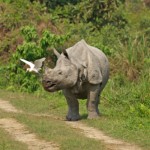![Good news and bad news for India's rhinos during the first quarter of 2012. Photo by Lip Kee from Singapore, Republic of Singapore (Rhino closeup) [CC-BY-SA-2.0 (http://creativecommons.org/licenses/by-sa/2.0)], via Wikimedia Commons](https://annamiticus.com/wp-content/uploads/2013/03/Rhino_closeup_-_Flickr_-_Lip_Kee.jpg)
India is home to more than 70 percent of the world’s greater one-horned rhinoceros population, and the latest census has revealed that the numbers of this Asian species are continuing to rise. But rhino killings are on the rise, too.
First, the good news: There is quite a bit to celebrate when it comes to the greater one-horned rhinos of India. The Times of India reports that a census completed this week showed that the rhino population in Kaziranga National Park increased by 39 rhinos in just 11 months! There has also been a rhino “baby boom”, as 135 rhino calves under the age of one year, and 276 young rhinos between one and three years of age (sub-adults) were counted in Kaziranga. The new total of 2,329 rhinos is comprised of more adult and sub-adult female rhinos than adult and sub-adult males.
According to WSJ.com, hundreds more guards — armed with automatic weapons — are headed into Kaziranga. In addition, unmanned drones will soon be deployed over the Park to assist in monitoring rhinos and other wildlife.
The Hindu reports that the rhino population in Jaldapara Wildlife Sanctuary, West Bengal, has increased by 25 percent since 2011 and now holds 186 rhinos. There have been no known killings of rhinos in Jaldapara since 2009.
Meanwhile, in Manas National Park, two newborn rhinos were seen with their mothers on March 23rd and 27th. The new mothers had been translocated to Manas as part of Indian Rhino Vision (IRV) 2020. WWF-India says that the births confirm that the rhinos are successfully adapting to their new home. So far, ten rhinos from Pobitora Wildlife Sanctuary and eight from Kaziranga National Park have been translocated to Manas National Park under IRV 2020 — a joint initiative of WWF-India; the Department of Environment and Forests, Government of Assam; the International Rhino Foundation; the U.S. Fish and Wildlife Service; Bodoland Territorial Council and local organizations.
And the bad news: India’s 2013 rhino death toll could be on track to exceed the number of rhinos killed in 2012.
As part of a March 5th presentation given at CITES CoP16, Dr. Bibhab Talukdar, Chair of the IUCN Asian Rhino Specialist Group, reported that at least 12 rhinos had already been killed since the beginning of 2013, as compared to 21 killed during all of 2012.
Not a single month in 2012 went by without a rhino being killed in India.

Sadly, two more greater one-horned rhinos have been gunned down, bringing India’s 2013 rhino death toll to 14. The most recent tragedies occurred this week in Kaziranga National Park, with two rhinos killed within 24 hours. Update 03/30/2013: 17 rhinos have been killed in Assam since the start of the year.
However, New Tang Dynasty Television reports that police, assisted by park officials, have arrested a gang of five rhino killers believed to be responsible for one of the most recent incidents.




